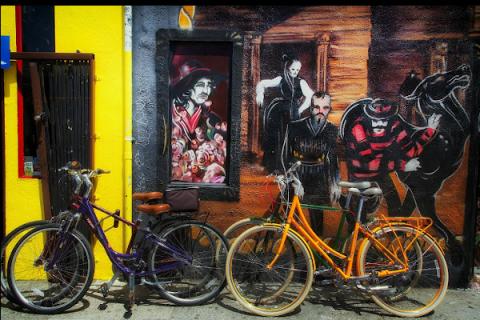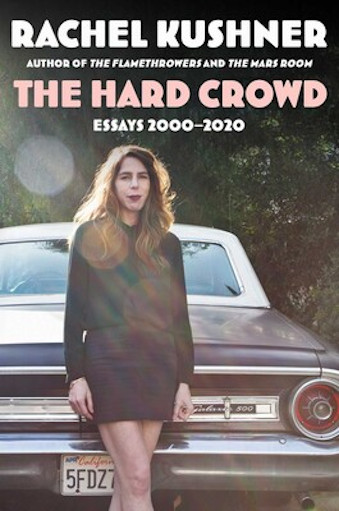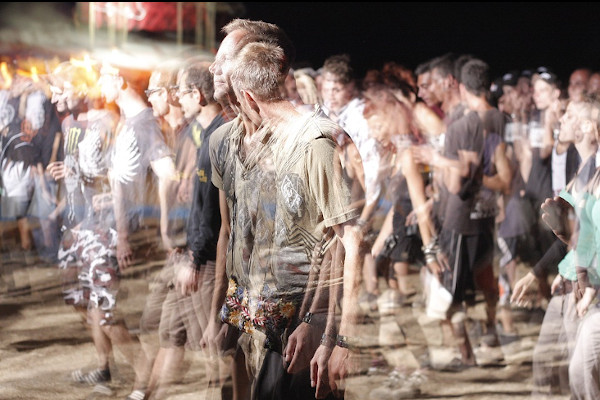Rachel Kushner Has a Million Stories to Tell in ‘The Hard Crowd’

The Hard Crowd: Essays 2000-2020
By Rachel Kushner
Scribner
258 pages
Where does a writer’s material spring from? In the case of acclaimed novelist Rachel Kushner, a wide range of life experiences and interest in (sometimes) obscure subject matters seems to form the core of her artistic endeavors. In novels like The Flamethrowers and The Mars Room, Kushner guides readers through the New York art scene of the 1970s, revolutionary fervor in Italy, then on to the ragged edge of existence in San Francisco’s Tenderloin district and life in a women’s house of detention.
A similar array of interests forms the scaffolding for The Hard Crowd, Kushner’s new collection of essays published between 2000 and 2020. These pieces delve into art, literature, motorcycles, muscle cars, and the Palestinian refugee crisis. Most powerfully, she shares intense recollections of her coming of age in the Tenderloin and elsewhere in the Bay Area.

While some of these essays feel slight and perhaps too condensed, several deliver the same impact as her best works of fiction. In “Bad Captains,” for example, she considers the repercussions of the infamous wreck of the Costa Concordia, which struck a rock off the Italian coast in 2012, resulting in dozens of passenger deaths.
Absent among those fatalities was the ship’s captain, Francesco Schettino, who chose to ignore the age-old maritime tradition wherein the captain always goes down with the ship:
“Schettino was conspicuously dry and on land while many hundreds of passengers were still on board; or sliding down ropes past the ship’s enormous port-side flank; or jumping thirty feet into the water and attempting to swim for land; or helpless and praying, being either old or infirm or with children too young to climb down ropes; or, after slipping on fuel-sloshed and tilting decks, found themselves trapped in the depths of the ship, where the water was rising.”

Kushner’s reflections on this terrible incident extend to observations on the wreck of the Medusa in 1816, fictional accounts of tragedies at sea in the work of Joseph Conrad and Louis-Ferdinand Céline, and thoughts generally on the allure (and disappointment) of the cruise ship experience. The piece is emblematic of her penetrating, imaginative take on life and what we make of it.
In the title essay, “The Hard Crowd,” Kushner vividly re-enacts the tumultuous events of her youth (“sometimes the million stories I’ve got and the million people I’ve known are pelting the roof of my internal world like a permanent hailstorm”). This “pocket memoir” is triggered by viewing archival film footage on YouTube of downtown San Francisco shot in the 1960s. She describes vintage images of the Civic Center (“where we kids went looking for trouble”), the Greyhound bus station south of Market Street, and fabled Haight-Ashbury, already past its heyday, which is “ruined” for her by skinheads who crash parties, get into fights, and so on.
Kushner was part of this scene in the 1980s and anointed herself “the world’s leading expert on ten square blocks of the Sunset District,” as well as parts of the Tenderloin and adjacent neighborhoods. She writes movingly of many colorful (and damaged) individuals from that long-ago time, several of whom don’t make it out alive.
At the same time, she says:
“I was the weak link, the mind always at some remove: watching myself and other people, absorbing the events of their lives and mine. To be hard is to let things roll off you, to live in the present, to not dwell or worry. And even though I stayed out late, was committed to the end, some part of me had left early. To become a writer is to have left early no matter what time you got home. And then I left for good, left San Francisco. My friends all stayed. But the place still defined me as it has them.”
Fans of Kushner’s fiction will find many rewards here, both in the quality of her steely prose and in a deeper understanding of the wellspring of her novels.
Author Bio:
Lee Polevoi, Highbrow Magazine’s chief book critic, is the author of The Confessions of Gabriel Ash, to be published in 2022.
For Highbrow Magazine
Image Sources:
--Needpix (Creative Commons)
--Pixabay (Creative Commons)































































































































































































































































































































